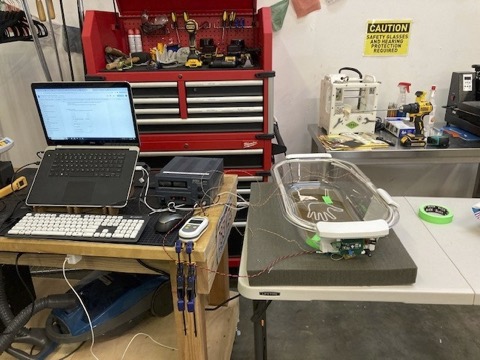Social Impact Internships: Ellie Jaffe (’25)
My name is Ellie Jaffe, I am a Junior from Riverside, Connecticut. I am majoring in Biomedical Engineering (Course 2A) where I have been active in the Musical Theater Guild, Ribotones and the Leadership Training Institute.
This IAP I worked as a biomedical engineering intern at Design that Matters. Working at DtM I learned about the issues low resource settings have with using existing biomedical technology and how new products can be developed to address these problems. The biomedical technology industry centers around the Western health sectors leading to a gap between the needs in low resource settings and the existing technology available. Things like the design of hospitals and medical centers, accessibility of electricity and cleaning materials, as well as cultural differences can all affect the effectiveness of a device. At Design that Matters, the Otter infant warmer is designed to address the gaps in current infant warming technologies in low-resource settings in order to decrease infant hypothermia, which is associated with infant fatalities in low resource settings.

In order to determine the problems with current infant warming devices, DtM first visited hospitals and observed doctors and nurses use the existing devices, as well as interviewed people about why they used some devices and not others, and what current problems existed with the system. They discovered that ease of cleaning and heat up time can dramatically effect device usage, and that while there were standing systems, there were no existing systems that worked well to warm the infant during transport. Cleaning especially is important, as sepsis is a leading cause of infant death and 30% of bacteria that an infant may come in contact with is inside an incubator. It has also been noted that cleaning an incubator takes an average of 45 minutes. With these things in mind, the Otter warming device was developed.
When I worked at DtM, the second prototype had already been developed. In developing the Otter beta prototype, DtM had traveled to multiple hospitals and had people try out the device and give feedback. They observed people using the device and saw its flaws and then made changes to the device. This included making the device easier to maneuver through doorways and more comfortable to carry. This
process is called human-centered design, and it is integral to the way DtM works. By centering on the users and including them in the design process, DtM is able to design a product that works and users will be confident in.
While human-centered design is something MIT tries to teach, it is difficult to teach over the course of the semester and while taking a full course load. By getting this hands-on experience, I learned a lot about how details of the product affect the design, as well as how design flaws can have significant impact. I also learned how to apply field observations to changes in products, and how important it is to overdo documentation and photos in order to ensure that any details that could be important later are recorded.
Tags: Social Impact Internships, Social Impact Internships IAP 2024
